How to Make Traditional Danish Biksemad (Hash)
If you’re looking for a hearty, no-fuss meal that turns leftovers into pure comfort food, Danish Biksemad is your answer. This rustic dish, also known as “hash,” is a beloved staple in Denmark—especially when there’s cold roast meat and potatoes begging to be used.
It’s the kind of meal that doesn’t need fancy ingredients or complicated steps. Just toss together diced meat, pan-fried potatoes, and onions, and you’ve got yourself a warm, satisfying plate of goodness.
What makes Biksemad special is its down-to-earth charm and how easily it adapts to whatever you’ve got in the fridge. Some versions add beets or pickles for a tangy kick, and nearly all are topped with a runny fried egg—because, honestly, what isn’t better with a fried egg?
Whether you’re cooking for a lazy weekend brunch or a quick weeknight dinner, this dish comes together fast and fills you up.
In this post, I’ll walk you through the simple steps to make classic Biksemad, share a few variations, and offer tips for getting that perfect crispy edge on your potatoes. Once you try it, you’ll see why it’s a comfort food favorite across Denmark. Let’s get cooking!
Danish Hash or Biksemad Recipe
Ingredients
- 3 ounces butter
- 2 medium onions sliced thin
- 4 medium potatoes peeled and cut into small cubes
- 1½ pounds cooked pork loin cut into small cubes
- salt & pepper to taste
- 1½ cups chicken or beef stock
- 1 tablespoon parsley finely chopped
Instructions
- Prep the Ingredients
- Bring a medium sized pot of salted water to boil. Add the cubed potatoes and cook until they just start to get fork tender. You don’t want the potatoes to overcook. Drain and rinse under cold water to stop the cooking process. Reserve.
- While the potatoes are cooking, prep the rest of the ingredients.
- Heat a frying pan large enough to hold all the ingredients over medium heat. When hot, add butter being careful not to let it burn.
- As soon as the butter melts, add the onions and cook slowly until the onions are caramelized. You may need to turn down the heat to medium-low or even low so they don’t cook too quickly. This takes 10 to 15 minutes.
- Season with salt & pepper.
- Once the onions are caramelized, add the potatoes, stir and cook for a few minutes.
- Add the stock and then the pork cubes. Stir and cook for 3 – 4 minutes until the pork is heated through.
- Add the parsley, stir, taste and adjust seasonings with salt and pepper.
- We served the Biksemad with leftover roasted fennel and steamed broccoli.
Danish Side Dishes Pairing Well with Biksemad
Side Dish | Description | Why It Pairs Well |
| Rødbeder (Pickled Beets) | Sliced or diced beets preserved in a sweet vinegar brine. | The sweet and tangy flavor cuts through the richness of the meat and potatoes. |
| Rugbrød (Danish Rye Bread) | Dense, dark sourdough rye bread often sliced thin. | Adds a chewy texture and earthy depth that complements the hash. |
| Syltede Agurker (Pickled Cucumbers) | Thinly sliced cucumbers in a mild, sweet-sour brine. | Provides brightness and crunch, balancing the dish’s savory components. |
| Stegte Æg (Fried Egg) | Usually served sunny-side up with a runny yolk. | The creamy yolk enriches the hash and ties all the flavors together. |
| Remoulade | A tangy Danish condiment made with mayo, pickles, and curry. | Offers a zesty, creamy contrast that elevates the dish. |
| Løg (Fried Onions) | Thin onions fried until crisp and golden. | Adds crunch and a sweet-savory layer that enhances the flavor profile. |
| Kold Øl (Cold Beer) | A light Danish lager or pilsner. | Refreshes the palate and pairs naturally with the hearty flavors. |
Biksemad
Biksemad is a traditional Danish dish that epitomizes comfort food and resourcefulness in the kitchen. The name “biksemad” translates to “mixed food,” reflecting its nature as a dish composed of various leftovers, primarily meat and potatoes. It is particularly cherished for its simplicity, heartiness, and the nostalgic taste of home-cooked meals.
The core ingredients of biksemad include diced potatoes, onions, and pieces of meat, typically beef or pork, which are all fried together in a pan. Often, the meat used is leftover from previous meals, making biksemad an excellent way to minimize food waste. Additional ingredients might include carrots, beets, or other vegetables, depending on what is available. The dish is seasoned with salt, pepper, and occasionally a bit of Worcestershire sauce or ketchup to enhance the flavor.
One of the defining characteristics of biksemad is its versatility. While the basic recipe is straightforward, the variations are numerous, allowing cooks to adapt the dish based on their preferences or what ingredients they have on hand. Some might add a touch of paprika for a bit of spice, while others could incorporate herbs like thyme or rosemary for an aromatic twist.
Biksemad is traditionally served with a fried egg on top, adding richness and an extra layer of texture to the dish. Pickled beets and a dollop of mustard are common accompaniments, providing a sharp, tangy contrast to the savory and hearty main components. This combination not only adds to the flavor profile but also introduces vibrant colors to the plate, making the dish as visually appealing as it is delicious.
The origins of biksemad are rooted in practicality and the frugal nature of traditional Danish cooking. It exemplifies the Scandinavian ethos of making the most out of available resources. Historically, it was a way to use up leftovers, ensuring that no food went to waste. This aspect of biksemad resonates with contemporary movements toward sustainable and zero-waste cooking, making it relevant in today’s culinary landscape.
In Denmark, biksemad is more than just a meal; it is a culinary tradition that brings families together. It is a dish that many Danes associate with childhood, family gatherings, and the comforting aroma of home-cooked food. Whether enjoyed as a quick weeknight dinner or a leisurely weekend brunch, biksemad continues to be a beloved staple in Danish households. Its enduring popularity is a testament to its delicious simplicity and the warm, homey feelings it evokes.
Scandinavian Hash
Also called “pyttipannu” in Sweden and meaning “small pieces in pan”, Danish biksemad translates to “food that has been mixed together”. I learned it is typically served with a fried egg but I don’t remember my mom ever serving eggs with this dish.
Although made with leftover meats and potatoes, we par boiled fresh potatoes first but did use some delicious tea crusted pork loin served a couple of nights earlier to my wife’s sister and brother-in-law who were visiting.
By the way, the pork loin was a great meal and I’ll have to write about it soon.
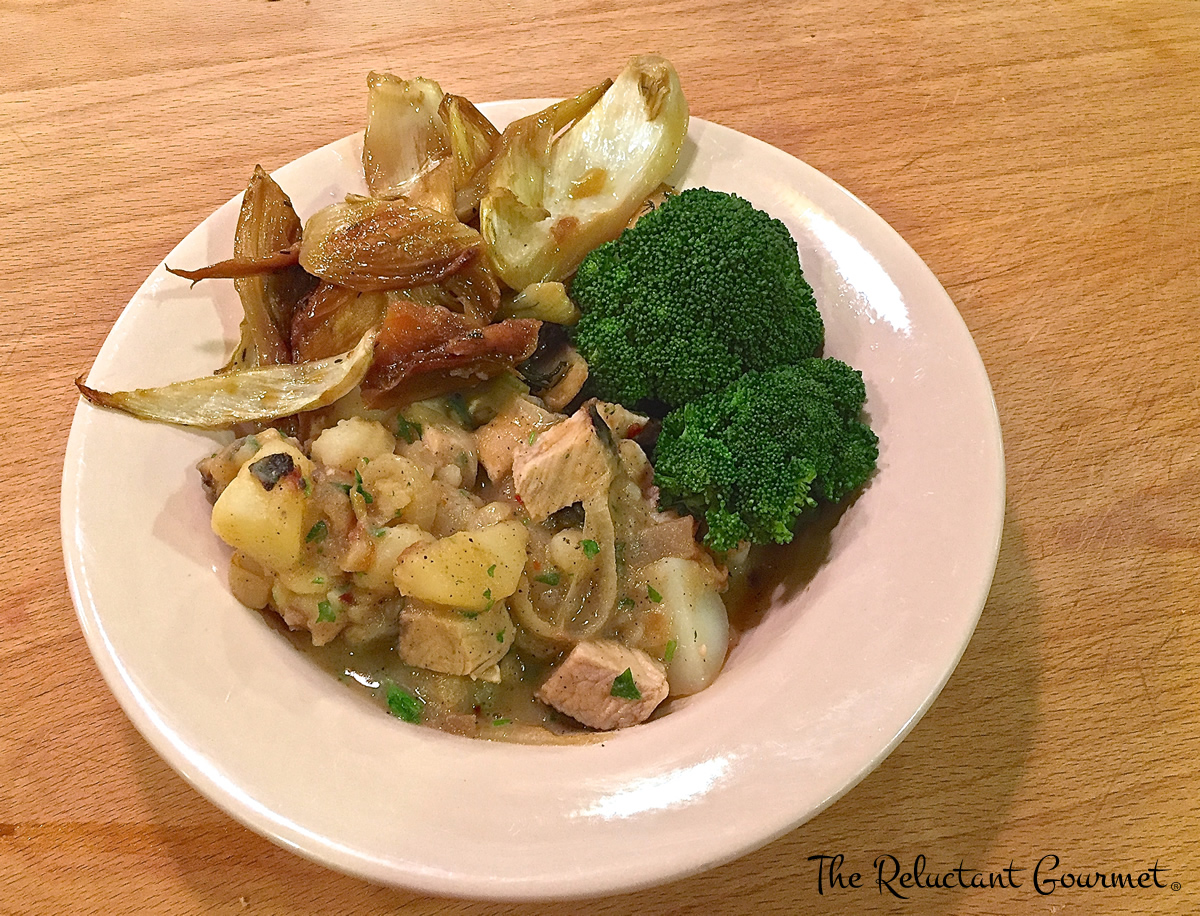
My Experience with Biksemad
As a kid, my mom, who grew up in Denmark, would make biksemad anytime there was leftover pork. It might have been leftover pork loin from a Sunday roast or broiled-to-death pork chops from midweek.
As with most pork dishes my mom made, they were usually served with boiled potatoes.
It wasn’t one of my favorites growing up but that was because the pork was typically overcooked and the entire dish was incredibly dry. In my house, you couldn’t leave the table until your plate was clean so a lot of milk was consumed with this dish.
I’ve tried to adapt my mom’s recipe by adding chicken stock to make a gravy and according to the rest of my family, it worked.

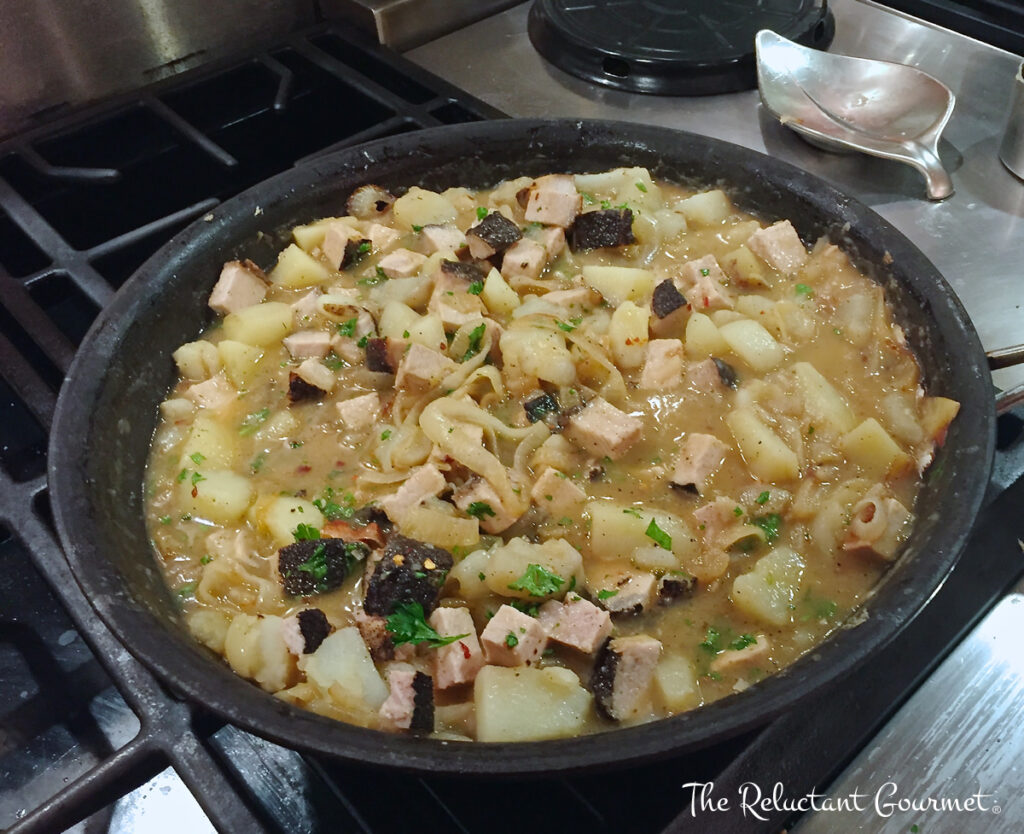

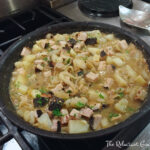
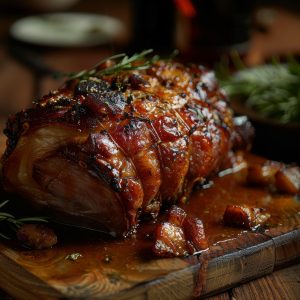
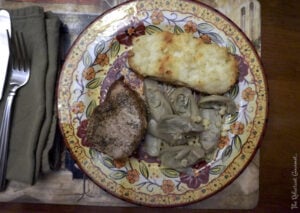

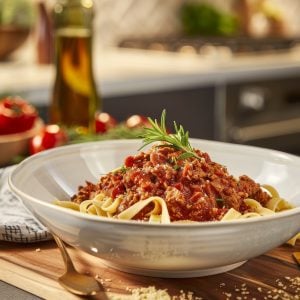
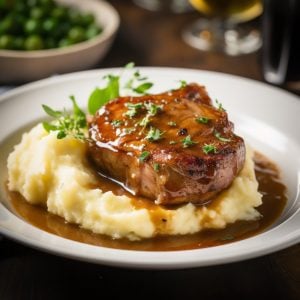
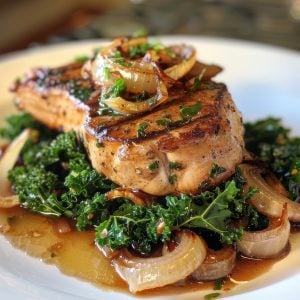
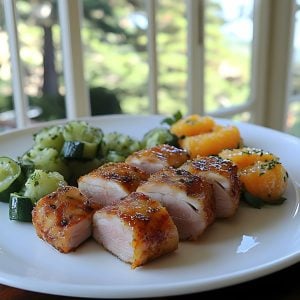
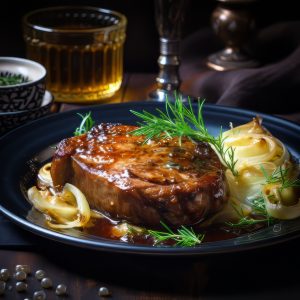


5 Responses
Instead of adding a liquids like broth I use leftover gravy. The gravy made from a pork roast is heavenly.
I never throw out liquids from cooking meats and vegetables. It can always be turned into a gravy giving some extra taste. Not to mention the traces of nutrients from the cooked items.
ps. Was born and raised in Copenhagen. Spent half my life in Denmark and the other half in Canada and US.
Thanks Janette for you comments. Great tips.
Have made this multiple times, usually with leftover beef. Brown Gravy is always added, usually with gravy coloring to make it a dark brown. If no gravy is available I will add some flour to the sauteed onions to make a roux, then some beef or chicken stock, worcestershire sauce, gravy coloring. Fried egg is a must, along with sweet pickled red beets. Ketchup is also made available. I have never had any other vegetables with this — mom just never ever served them with this dish at all.
Hi Kirsten, thanks so much for your comments and suggestions.
I love to learn new recipes and how to prepare them I’m going to try these recipes soon they sound wonderful.